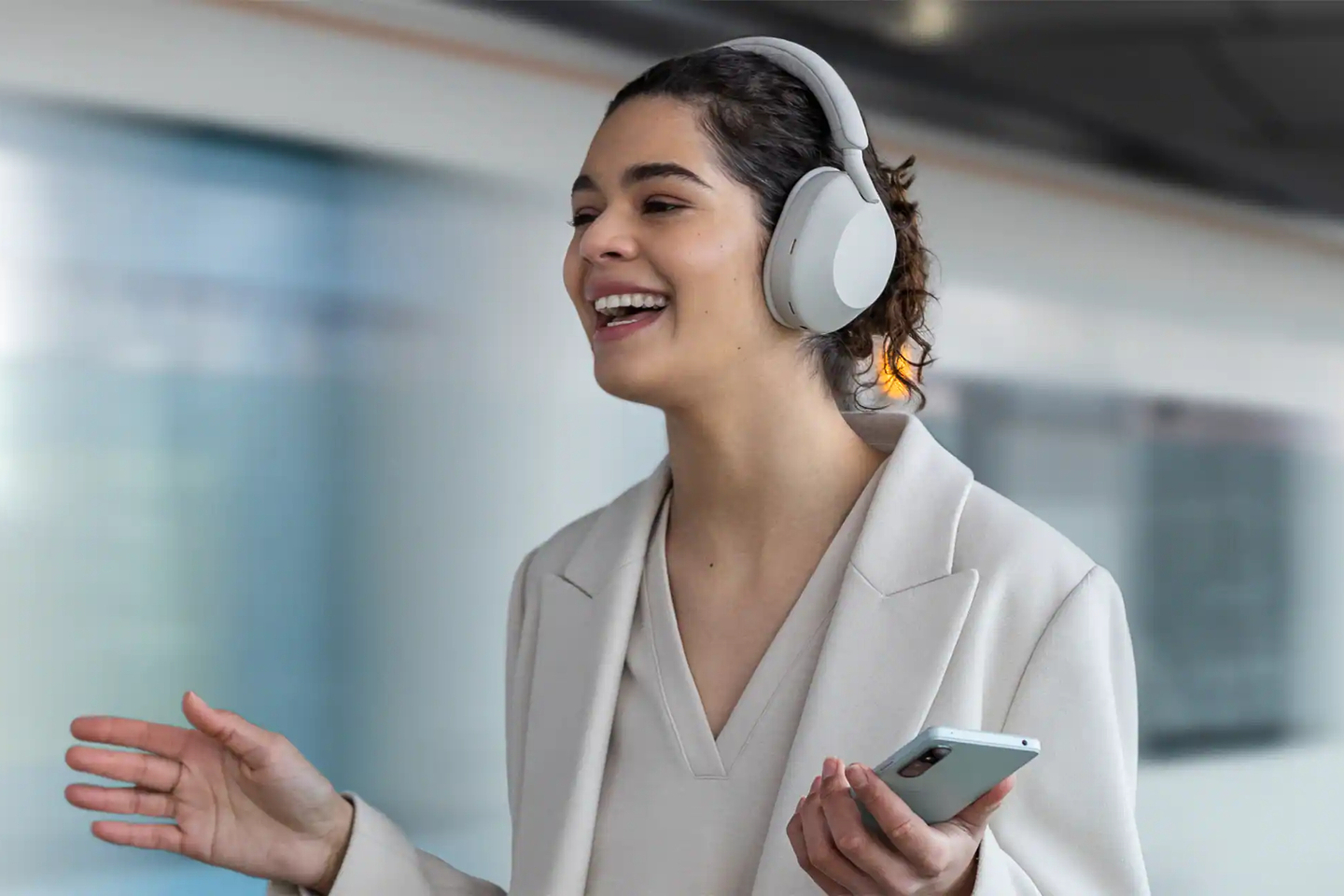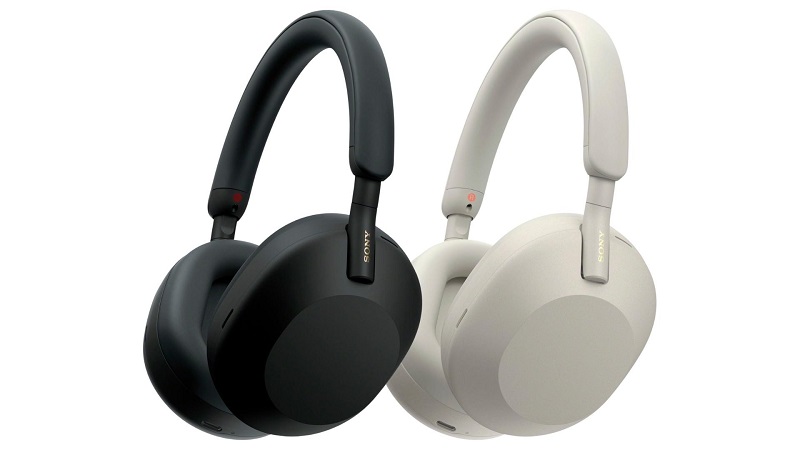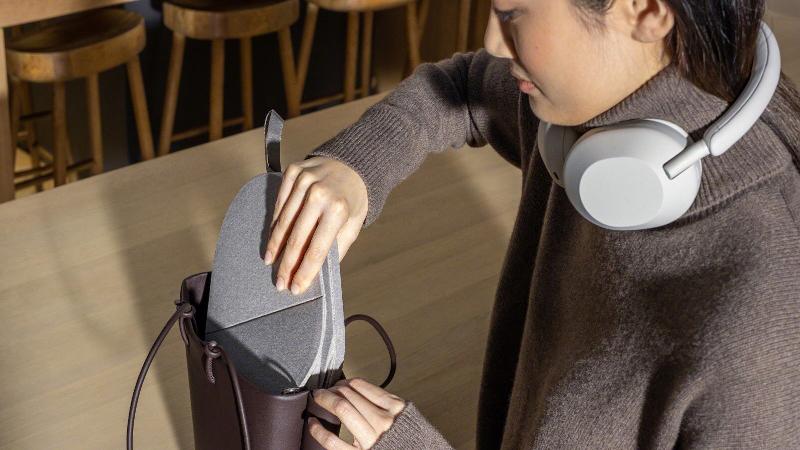
Active noise cancelling is where Sony excels (All photos: Sony)
Sony has an indisputable reputation for being the king of noise cancelling, producing the best over-ears on the market. For years, it has consistently dominated the segment without much competition — save for the very pricey AirPods Max that made Apple loyalists swoon — with its WH-1000XM range. There has been a lot of talk about its latest release, the WH-1000XM5, which garnered high levels of interest and anticipation from audiophiles pre-launch. The question was whether there was even room for Sony to raise the already-high bar it had set for the industry.
First impressions are always important, starting even from the product box. No plastic is used in the XM5 packaging, which is made using recycled and sustainable materials developed specially for Sony. In line with its Green Management 2025 environmental targets, the Japanese conglomerate has also successfully introduced recycled plastic materials into the body parts of new models, including the XM5. Inside the box is a new collapsible case (more on this later) that stores the headphones, a USB-A to C charging cable and 3.5mm audio cable.
Visually, the XM5 is quite beautiful. Compared to previous models, it features a slimmer and rounder headband with more minimalistic earcups. The material is made with a newly developed “soft fit leather”, which allows it to fit snugly around the head with less clamping pressure on the ears. Soft, curvaceous lines make the XM5 look modern and sleek. And as usual, Sony did not go crazy with colour, but the matte finish on the black and off-white (almost light grey) variations adds to the headphone’s contemporary appearance.
li_wh1000_xm5_colors.jpg

A “noiseless design” was employed in the XM5 using a swivel and sliding mechanism. This eradicates the rattling and twisting sound many were complaining about in the XM4, but it comes with a new set of problems. While the earcups swivel enough to angle to your ears, they do not rotate a full 180 degrees. This means the earcups face upwards when the headphones are around the neck, which may not be a big deal for most people but one would assume these minor hiccups should have been sorted out because users are paying a premium.
Moreover, the XM5 does not fold into itself, which may be a drawback for those who prefer something more compact. This leads us back to the collapsible case mentioned earlier. To accommodate the XM5’s non-foldable structure, the case is now larger and bulkier. While it does collapse to some degree, the size reduction is not significant enough to offer much convenience. One would have no problems with this issue if its main usage were primarily at home or the office, but those who prefer jamming out to tunes while commuting or travelling may find it a tad troublesome to carry around.
All that aside, a make-or-break factor is, of course, the audio performance. In this respect, Sony is still the best in the business. The XM5 offers a full, rich, vibrant and enveloping sound profile that emphasises higher and lower frequencies, allowing even the finest nuances to be heard. The bass is punchy without being overprominent and heavy. Turn up the volume to kick it into high gear and you will be able to fully appreciate its superlative sound and listening experience. The equaliser, along with other sound and system features, can be adjusted in the Sony Headphones app. And intuitive touch controls allow easy song switching and volume adjustments. For those who are used to earbuds, it may be helpful to know that the headphones offer a wider sound stage, as the speakers or drivers are not as close to the ears, making the audio more immersive overall.
sony_wh-1000xm5_collapsible-carrying-case_thumb.jpg

Active noise cancelling (ANC) is the other major factor, and rest assured this is where Sony excels. The XM4 has always been the leading noise-cancelling headphones in the market, but the XM5 is here to knock it off the pedestal. Two high-performance processors control eight microphones to help detect and block out outside noise from high and mid frequencies.
We put the XM5 through its paces by testing it out in various settings. When there is a need to enter hyper-concentration mode at home or the office, we find that the XM5 effectively blocks out ambient noise such as the TV or over-the-desk chatter, allowing you to clock in hours of work without being distracted. Multipoint connection also allows the headphones to be paired with two Bluetooth devices at the same time, so you can easily switch between calls. And when hands-free help is needed, Siri, Alexa and Google Assistant can be activated with voice command.
The ANC also performs well in busier environments such as cafés and shopping malls, where external noise is significantly more prominent. With the Speak-to-Chat feature, the music automatically stops as soon as you start a conversation. Reaction time is quick and allows around 15 seconds (adjustable) to lapse until music resumes — handy if you just want to place a coffee order. When Adaptive Sound Control is activated, the smart function learns the user’s behaviour and recognises frequented locations, then tailors the listening experience accordingly.
sony_1000mx5_1.jpg

When you are travelling, ambient sounds are automatically adjusted to ensure announcements are not missed. However, since there are still precautionary Covid-19 messages on our train platforms, as well as the jingle playing in MRTs, it may come across a little disruptive. It is the same with airports, but thankfully, in-flight airplane noise and crying babies a few rows away are inaudible. Shrieking children might pose a problem, though. We also want to note that unlike the XM4, the XM5 does not come with an airplane adapter, so travellers had best pack one along.
With 30 hours of battery life, there is enough power even for long trips. Should you forget to charge the night before, three minutes with the optional USB-PD compatible AC adapter will get you three hours’ worth of charge.
In terms of sound quality and ANC, the XM5 is by far industry-leading. But if you pitch it against its predecessors, it may be two steps forward one step back, depending on what one prioritises. Is Sony approaching the ceiling for noise-cancelling headphones? It looks like it. But there are always other areas to consider, such as waterproofing potential or, perhaps, as everyone points out at every release, better model names.
This article first appeared on June 27, 2022 in The Edge Malaysia.


